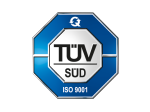Can Aluminium Be Welded?
Yes, aluminium can be welded successfully with the right preparation and process. Unlike steel, aluminium has a protective oxide layer that melts around 2,050 °C, while the metal beneath melts near 660 °C. This difference, combined with aluminium’s high thermal conductivity, makes it more sensitive to heat distortion and contamination.

What Type of Welding Is Used on Aluminium
We select the method based on thickness, joint design, finish requirements, and budget.
- TIG (GTAW) — Best for thin sheet, intricate parts, and premium cosmetic finishes. AC balance helps break the oxide layer, and we use pure argon (or argon-helium blends for thicker work). Architectural projects like aluminium louvers require careful TIG welding to achieve smooth finishes that match the building’s design and airflow requirements.
- MIG (GMAW) — Best for faster production on medium-to-thick sections. We pair MIG with a spool gun or push-pull torch to feed soft aluminium wire reliably. For larger assemblies or tubular structures, aluminium hollow sections are often welded using MIG for faster production and cleaner seams.
- Laser & Hybrid Laser-MIG — Ideal for high-precision work, tight heat input, and minimal distortion on thin sections or long seams.
- Friction-Stir Welding (FSW) — Excellent for long, flat seams in plates and extrusions with very low distortion (common in transport and marine panels).
- Spot & Resistance Welding — Useful for specific sheet assemblies and brackets where joint design allows.
Typical alloys we weld in Singapore: 6061-T6, 6082-T6, 5052-H32, 5083-H116. Common fillers: ER4043 (good fluidity, reduces crack risk) and ER5356 (higher strength, better for anodising).

Is It Difficult to Weld Aluminium
Welding aluminium is not hard, but it’s less forgiving than mild steel. Success depends on cleaning the surface, using the right shielding gas (usually pure argon), selecting the correct filler metal such as ER4043 or ER5356, and controlling heat input.
Aluminium is a lightweight metal alloy known for its high thermal conductivity and corrosion resistance, which explains why welding it requires more control than mild steel. Aluminium forms a hard aluminium-oxide skin instantly when exposed to air. That oxide melts at a higher temperature than the base metal. At the same time, aluminium conducts heat very fast, so heat spreads away from the weld zone. If you don’t plan for this, you risk poor fusion, porosity, and distortion. We control these risks with proper cleaning, shielding gas, heat input, and fixturing.
How to Weld Aluminium Correctly
Identify the alloy and temper
We confirm base metal (e.g., 6061-T6 vs 5052) and joint loads to choose the right process and filler.
Prep the joint
We degrease with acetone, then remove oxide with a stainless-steel brush kept only for aluminium. We bevel thicker edges for penetration.
Control heat
We fixture the workpiece, use copper backing bars when useful, and tune AC balance (TIG) or parameters (MIG) for stable arcs.
Protect with the right gas
Pure argon works for most welds; argon-helium blends improve penetration on thicker sections.
Pick the right filler
ER4043 for crack-sensitive or cast parts. ER5356 for higher joint strength or where you plan to anodise.
Finish and verify
We remove surface soot, inspect visually, and use dye-penetrant or other NDT methods when the application demands it.
After welding, surface finishing matters, if painting is required, check our guide on how to paint over anodized aluminium surfaces to ensure proper adhesion and a long-lasting coat.

Cheapest Way to Weld Aluminium
For most general projects, MIG welding offers the cheapest and fastest option because it runs continuously and needs less finishing. TIG may cost slightly more per weld but reduces rework and is better for thin or cosmetic joints.
Many welding projects use aluminium flat bars of various sizes and thicknesses for frames, brackets, and structural joints because they are easy to fabricate and weld.
Work With The Monster Builder
Share your drawings or a simple sketch. We will recommend the best aluminium sheet fabrication and CNC machining approach for your budget, lead time, and performance target then deliver parts that fit first time.
Conclusion
Aluminium excels when you pair the right alloy with the right process. The Monster Builder unites aluminium sheet fabrication and CNC machining under one roof in Singapore, so you get clear guidance, predictable lead times, and consistent quality from prototype to production.
Tell us what the part must do, and we will turn it into a durable, precisely finished component, ready for the next stage of your build.



